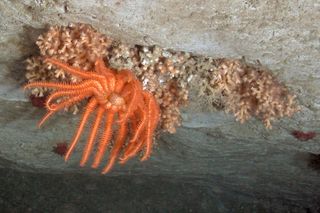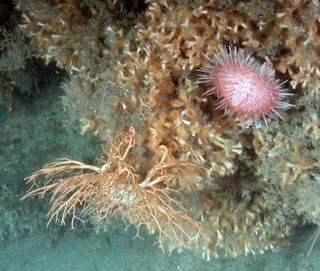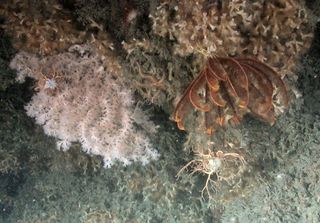Shallow Animals OK With Deep-Sea Pressures

VANCOUVER, British Columbia — Tiny sea animals can survive more than 3,000 feet (1,000 meters) from their home — 3,000 feet down that is. Researchers placed tiny shallow-water shrimp in artificial pressure containers, pressurized to 100 times that felt on the surface of the Earth, for a month and watched as they performed their normal feeding and molting routines.
"Shallow-water shrimp are capable of sustaining hydrostatic pressures in reach of vents in the deep sea," study researcher Sven Thatje, of University of Southampton, in the United Kingdom, said at a presentation here at the annual meeting of the American Association for the Advancement of Science. "They can far exceed their current distribution range," which would allow them to re-colonize the deep ocean.
Changing oceans

Pressure determines where marine mammals can live. If certain species can't survive high-pressure environments, then those species can't live in the deep sea. As habitats change and species go extinct, these environments could hold new food sources and places to live for animals that could occupy them.
This ability may help the shrimp, called Palaemonetes varians, survive as their ocean homeswarm due to climate change. P. varians, the Atlantic ditch shrimp, lives in the top 15 feet (5 meters) of slightly salty waters, where the ocean meets rivers.
"It's well-established knowledge that climate warming is causing changes to the distribution of organisms," Thatje said. This has been seen with land animals moving to higher ranges as the land warms; the same thing could happen in the oceans. "Moving to greater depths … allows species to escape undesirably warm surface waters."
These ditch shrimp may have gotten their ability to withstand high pressures from their shrimplike ancestors, which may have colonized the deep sea at one point.
Sign up for the Live Science daily newsletter now
Get the world’s most fascinating discoveries delivered straight to your inbox.
"Species are generally adapted ... for a certain range of pressures in the water column. Different species would have different ranges of ability to handle those pressures," Thatje said. The ditch shrimp, "actually quite happily tolerate pressures up to 2,000 meters."
In hot water

The researchers have also found that some animals survive these extreme pressures better when the temperature is warmer, while some do better when it's colder. As the oceans warm, Thatje said, it's likely that some will be winners and some losers. An animal that can handle pressures better in warmer waters might have extended areas in which to live as the oceans warm, while others might see their habitats shrink into oblivion.
"We suggest [this] may take place on human time scales, not necessarily over millions of years. The pace of such changes is likely dependent on the pace of ecosystem disturbance, maybe [due to] warming or other human impacts," he said.
This is the longest time researchers have studied these kinds of shallow-water animals under pressure, but they are looking to break their own record. The next step, Thatje said, is to see if the shrimp can survive another year — and perform their natural reproductive cycles — under these extreme pressures.
You can follow LiveScience staff writer Jennifer Welsh on Twitter @microbelover. Follow LiveScience for the latest in science news and discoveries on Twitter @livescience and on Facebook.
Jennifer Welsh is a Connecticut-based science writer and editor and a regular contributor to Live Science. She also has several years of bench work in cancer research and anti-viral drug discovery under her belt. She has previously written for Science News, VerywellHealth, The Scientist, Discover Magazine, WIRED Science, and Business Insider.
